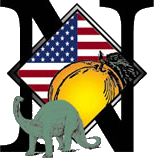An 8.52-carat white diamond was found Wednesday, June 24 by Bobbie Oskarson of Longmont, Colo., at Arkansas’s Crater of Diamonds State Park, according to park officials. Clear white and icicle shaped, this gem is the fifth largest diamond found by a park visitor since the state park was established at Arkansas’s diamond site in 1972.
Twenty minutes into her search, she found the diamond in a couple scoops she had dug from a small mound of dirt. Oskarson was in the southwest corner of the park’s 37 ½-acre search field in an area known as the Pig Pen, aptly named because it is the muddiest part of the search area after a good rain. She named her gem the Esperanza Diamond, both her niece’s name and the Spanish word for “hope.” At this time, Oskarson plans to keep the gem.
Now in the park’s record books, this 8.52-carat diamond is topped in size only by these previous four larger diamonds found by park visitors: the white 16.37-carat Amarillo Starlight found in 1975 by W.W. Johnson of Amarillo, Texas; white 8.82-carat Star of Shreveport found in 1981 by Carroll Blankenship of Shreveport, Louisiana; white 8.66-carat Illusion Diamond found in 2011 by Beth Gilbertson of Salida, Colorado; and brown 8.61-carat Lamle Diamond found in 1978 by Betty Lamle of Hitchcock, Oklahoma. [NOTE: The largest diamond ever discovered in the U.S. was unearthed at Arkansas’s diamond site in 1924 during an early mining operation prior to becoming an Arkansas state park in 1972. Named the Uncle Sam, this white diamond with a pink cast weighed 40.23 carats. Another notable gem found at the site prior its becoming a state park was the 15.33-carat Star of Arkansas, a white diamond found in 1956 by Winifred Parker, when the site was operated by Howard Millar as a privately-operated tourist attraction.]
Park Interpreter Waymon Cox said, “Ms. Oskarson and her boyfriend Travis Dillon saw the Crater of Diamonds State Park on an Arkansas highway map while in the nearby town of Hot Springs and decided to visit the park. And what a lucky first visit it was for her!” He noted that Oskarson found the diamond on Wednesday around noon hunting in the park’s 37 ½-acre search area that is the eroded top of the eighth largest diamond-bearing deposit in the world in surface area. “It was hot and sunny at the park, but Ms. Oskarson was staying cool by searching in a tree-shaded area when she found her diamond.” Park officials recommend that visitors bring drinking water and stay in shade as much as possible when looking for diamonds during the summer.
At first she thought it might be a quartz crystal due to its elongated shape, but park staff later confirmed that she had found a diamond. Cox said, “Ms. Oskarson’s eight-and-a-half-carat diamond is absolutely stunning, sparkling with a metallic shine, and appears to be an unbroken, capsule-shaped crystal. It features smooth, curved facets, a characteristic shared by all unbroken diamonds from the Crater of Diamonds.”
He continued, “Ms. Oskarson’s diamond is about three-quarters of an inch long and as big around as a standard No. 2 pencil.” It was found very near where Carroll Blankenship found the 8.82-carat white Star of Shreveport in 1981. “Now Ms. Oskarson’s diamond is a very special part of the Crater of Diamonds State Park’s history, too.”
Oskarson’s find is the 227th diamond certified by park staff this year. Cox noted that more than 30 other diamonds have been found on the surface of the search area so far in 2015, due in part to frequent rains this spring. “Rain, plus the regular plowing of the search field by our maintenance staff, increases visitors’ chances of finding diamonds in the search area.” Regular plowing loosens the soil and brings more diamonds to the surface, and then rain erosion plays its part. “Diamonds are a bit heavy for their size, and they lack static electricity,” Cox continued, “so rainfall slides the dirt off and leaves them exposed. When the sun comes out, they sparkle.”








